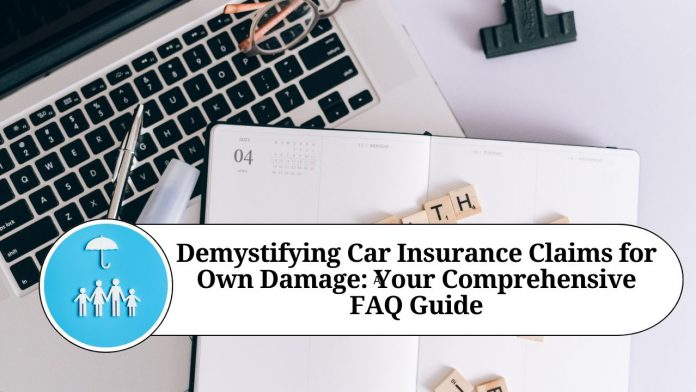A Comprehensive Guide on Claiming Car Insurance for Own Damage in India
Car insurance is a vital aspect of owning a vehicle, providing financial protection against damages caused by accidents, theft, or natural disasters. One of the essential components of car insurance is coverage for own damage. In this blog, we will explore the process of claiming car insurance for own damage in India, helping you navigate through the necessary steps to ensure a smooth and hassle-free experience.
Understanding Own Damage Coverage in Car Insurance Policies
Paragraph: Before delving into the claim process, it’s crucial to understand what own damage coverage entails. Own damage coverage protects your vehicle against losses resulting from accidents, fire, theft, vandalism, natural calamities, and more. It typically includes damages to the vehicle’s body, engine, electrical components, and accessories.
Gather Essential Documents for Claim Filing
Paragraph: To initiate the claim process, you must gather specific documents required by the insurance company. These may include a copy of the car insurance policy, a filled claim form, a copy of the vehicle’s registration certificate (RC), a valid driving license, and an FIR (if applicable). Additionally, keep any photographs, videos, or other evidence of the damage to strengthen your claim.
Inform the Insurance Company Immediately
Paragraph: After assessing the damages to your vehicle, it is crucial to inform your insurance company promptly. Most insurers have a specific time limit within which you must report the incident. Failing to inform them within this period might result in claim rejection. Contact the insurer’s helpline or customer support and provide them with all the necessary details regarding the incident.
Follow the Survey Process
Paragraph: Once you have informed the insurance company, a surveyor will be appointed to assess the extent of the damage. The surveyor will examine your vehicle, evaluate the repair costs, and prepare a report for the insurer. Ensure that you are present during the survey process and provide all relevant information to the surveyor to facilitate an accurate assessment.
File an FIR (if necessary)
Paragraph: In certain cases, such as accidents involving third-party vehicles or theft, it is essential to file a First Information Report (FIR) at the nearest police station. The insurance company may require a copy of the FIR for claim processing. Make sure to obtain a copy of the FIR and include it in your claim documents.
Complete the Claim Form and Submit Documents
Paragraph: After the survey process and filing of the FIR (if required), it is time to complete the claim form provided by your insurer. Fill in all the necessary details accurately and attach the supporting documents, including the claim form, copy of RC, driving license, FIR (if applicable), and photographs/videos of the damages. Ensure that all the documents are legible and authentic to avoid any complications.
Follow-Up and Track the Claim Status
Paragraph: After submitting the claim documents, it’s important to follow up with your insurance company regularly to stay informed about the progress. The insurer may assign a dedicated claim handler who can provide updates and address any queries you might have. Utilize the online portals or customer service helpline to track the claim status and promptly provide any additional information or documents if requested.
Settlement and Repair
Paragraph: Once your claim is approved, the insurer will provide you with the necessary instructions regarding repair and settlement. Depending on your policy, you may have the option to choose between authorized network garages or opt for reimbursement of repair expenses. Follow the insurer’s guidelines, complete the repair process, and submit the required invoices, bills, and receipts for reimbursement.
Conclusion
Claiming car insurance for own damage in India can be a straightforward process if you follow the necessary steps and provide all the required documents. Remember to inform your insurance company promptly, gather all relevant documents, and ensure accurate and timely filing. Stay engaged throughout the survey process, and if necessary, file an FIR to support your claim. Maintain regular communication with your insurer to track the claim’s progress and promptly provide any additional information if requested.
By understanding the own damage coverage in your car insurance policy and following the claim process diligently, you can maximize your chances of a successful claim settlement. It is essential to read and understand the terms and conditions of your policy to know the coverage limits, deductibles, and claim procedures specific to your insurance provider.
Lastly, it is advisable to maintain a comprehensive record of all your car-related documents, including insurance policies, registration certificates, and driving licenses. This will ensure that you have easy access to the necessary information when filing a claim and help streamline the process further.
Remember, claiming car insurance for own damage is your right as a policyholder, and with careful preparation and adherence to the guidelines, you can overcome the hurdles and receive the compensation you deserve.
Stay insured, stay safe!
Read More Useful Content:
- Top Benefits of E-Invoicing Software For Your Business
- Best e-Invoicing Software to Simplify Your GST e-Invoicing
- E-invoicing – Guide On E-Invoicing System In India
- How to Generate Electronic Invoicing (e-Invoicing) in Marg ERP Software
- GST E-invoice
FAQs (Frequently Asked Questions):
Q.What is own damage coverage in car insurance?
Own damage coverage in car insurance protects your vehicle against damages caused by accidents, theft, fire, vandalism, natural disasters, and more. It typically includes damages to the vehicle’s body, engine, electrical components, and accessories.
Q.How do I initiate a claim for own damage in car insurance?
To initiate a claim for own damage, inform your insurance company immediately after the incident. Contact their helpline or customer support and provide all the necessary details regarding the incident. They will guide you through the claim process.
Q.What documents are required to file a claim for own damage?
The documents required to file a claim for own damage typically include a copy of the car insurance policy, a filled claim form, a copy of the vehicle’s registration certificate (RC), a valid driving license, and an FIR (if applicable). Additionally, any photographs, videos, or other evidence of the damage should be included.
Q.How long do I have to report the incident to my insurance company?
Insurance companies have specific time limits within which you must report the incident. It is important to inform them promptly to avoid claim rejection. Refer to your policy document or contact your insurer for the exact time limit.
Q.What is the survey process in car insurance claims?
After informing the insurance company, a surveyor will be appointed to assess the extent of the damage. The surveyor will examine your vehicle, evaluate the repair costs, and prepare a report for the insurer. It is important to be present during the survey process and provide all relevant information to facilitate an accurate assessment.
Q.Do I need to file an FIR for every own damage claim?
Filing an FIR (First Information Report) may be necessary in cases involving accidents with third-party vehicles or theft. Check with your insurance company or local authorities to determine if filing an FIR is required for your specific situation.
Q.How can I track the status of my claim?
Most insurance companies provide online portals or customer service helplines where you can track the status of your claim. Stay in regular communication with your insurer and follow up as needed to stay informed about the progress.
Q.How are claims settled for own damage in car insurance?
Once your claim is approved, the insurer will provide instructions regarding the repair process and settlement. Depending on your policy, you may have the option to choose authorized network garages or opt for reimbursement of repair expenses. Follow the insurer’s guidelines, complete the repairs, and submit the necessary invoices, bills, and receipts for reimbursement.
\




















